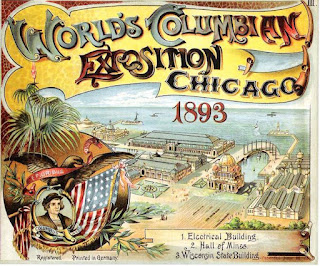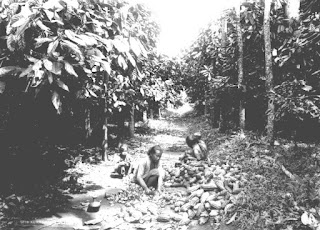MEXICAN HOT CHOCOLATE RECIPE
MEXICAN HOT CHOCOLATE RECIPE:
Prep time: 5 minutes
Cook time: 10 minutes
Total time: 15 minutes
Ingredients:
3 cups milk
3 tablespoons granulated sugar
2 tablespoons unsweetened cocoa powder
½ teaspoon ground cinnamon
½ teaspoon vanilla extract
¼ teaspoon ancho powder
Pinch of cayenne powder
Pinch of salt
2 ounces unsweetened chocolate
Topping (optional):
Whipped cream
Chocolate shavings
Cinnamon sticks
Instructions:
1. Add the milk, sugar, cocoa powder, cinnamon, vanilla, chili powders, and salt to a pot.
2. Bring to medium heat and add the chocolate. Whisk until the chocolate is melted fully and incorporated through—about 5 minutes. The mixture should be hot, but not boiling.
3. Serve into mugs and top with whipped cream and chocolate shavings, along with cinnamon sticks.
Servings:
4 small cups.
Thousands of years ago in classic Mesoamerica, the Maya took chocolate-making to a high art and created hot chocolate, a warm, bitter drink made of cacao, water, spices, and maize for medicinal and spiritual consumption. Over a century later, Aztec king Moctezuma II served Hernán Cortes the same Maya recipe cold. Conquistadors brought cacao back to Spain, keeping the delicacy secret for a century before releasing chocolate and its drink recipe to the rest of Europe. European elites adopted chocolate’s medicinal values, discarded the spiritual significance, and varied ingredients to appropriate the chocolate drink as their own. In a journey of taste, regional preferences, cultural assimilation, and technological innovation, hot chocolate traveled full circle from Mesoamerica to Mexico to Europe and back to the Americas, with each new country adjusting the recipe to taste. Recipe author Mike Hultquist adapted the Maya recipe in 2018 with “just the right amount of spiciness” for contemporary tastes.[1] The ingredients in this Mexican Hot Chocolate recipe reflect the hybridization of the Mesoamerican recipe through European transmutation and the effects of the Industrial Revolution on chocolate-making.
Mesoamericans preferred their cocoa peppery, mixing indigenous spices in a range of heat densities into their drink. Because of its mild flavor, ancho—the dried version of poblano peppers readily available in the mountains of the Puebla Valley, had been used as a main ingredient in Mesoamerican cuisine as far back as the Olmecs. Vanilla arrived in fifteenth-century Tenochtitlan as a tribute from the Totonacs of Veracruz to the king of the Aztec empire. Sacred like cacao, the “black flower of the Aztecs”—a subtle, complex spice derived from orchid pods—was blended into the chocolate beverage for energy. Cayenne, cultivated in Mexico seven thousand years ago, was so common to the area that when Aztecs referred to “chili” they meant cayenne. Dried cayenne peppers are so potent that Aztecs defended their homes against conquest by burning large amounts of cayenne to blind Spanish conquistadors with the fumes. Anthropological evidence indicates that ancient Maya salt kitchens existed over a millennium ago in Belize. The mineral became a constant in Aztec food to enhance flavor and counteract bitterness.
Once chocolate crossed the Atlantic with the Spanish, the European elite appropriated the ancient drink by altering the recipe. Although the Maya served chocolate as a hot beverage, the Aztecs preferred it cold or lukewarm. As such, the Spanish introduced the drink to the continent cold and Europeans colonized it by drinking their chocolate hot. The second and most crucial European modification added sugar to counteract chocolate’s natural bitterness, resulting in a significant change to the taste. From then on, the spices varied but chocolate recipes always included sugar. Sugar “embodied the social position of the wealthy and powerful” in Europe, adding to cacao the “mark of rank—to validate one’s [status].”[2] The third transmutation occurred due to lack of accessibility to New World ingredients like vanilla. With both the “spicy aspect of chili pepper and the floral attributes of the flower spice constellation,” Old World cinnamon replaced vanilla and other New World spices.[3] The Maya used maize, a Latin America staple unfamiliar to the European palate, as a thickening agent in hot chocolate. Instead, Europeans turned to milk as a thickener. Seventeenth-century Irish botanist Sir Hans Sloane, who learned to drink chocolate mixed with milk in Jamaica, is credited for introducing the chocolate/milk combination to Britain for health benefits.
The convenience of store-bought cocoa power and chocolate are innovations of the nineteenth-century Industrial Revolution. Prior chocolate preparation repeated the classic Maya process: cacao beans were dried, fermented, and toasted, then ground strenuously into a paste to be dissolved in water then seasoned. Today consumers bypass the drudgery of the Maya method with commercially-prepared forms of chocolate thanks to pioneering inventors like C. Van Houten and Joseph Fry. In 1828, Dutch chemist Van Houten invented the machine that reduces the fat content of the cacao paste into a cake that can be pulverized into cocoa powder. British innovator Joseph Fry used Van Houten’s machine in 1848 to blend cocoa butter with the cocoa powder, creating a smooth paste pourable into a mold. Hardened, Fry’s molded chocolate resulted in the first solid chocolate bar. The availability of both powder and bar shortened the preparation time of hot chocolate recipes down to as little as five minutes.
The ingredients in Mike Hultquist’s Mexican Hot Chocolate recipe reflect how European transmutation and the effects of the Industrial Revolution transformed the original Mesoamerican recipe. Researching the background of recipe ingredients beyond the market creates a historic profile of contributors and geographic influences, adding a greater understanding and appreciation of the origin of favorite recipes. To honor the Mesoamerican and European background of this recipe, consider drinking Mexican Hot Chocolate like they did—from a special cup, vessel, or mug.
BIBLIOGRAPHY:
HIS429. Lecture 5. Chocolate Factory: Technological Revolution
Homegrown Herbalist. “Cayenne Tincture History and Folklore.” Accessed November 6, 2021. https://homegrownherbalist.net/product/cayenne-tincture/
Hultquist, Mike. “Mexican Hot Chocolate.” Chili Pepper Madness. December 17, 2018. https://www.chilipeppermadness.com/recipes/mexican-hot-chocolate/
Louisiana State University. "Salt: Mover and shaker in ancient Maya society." ScienceDaily. Accessed November 5, 2021. www.sciencedaily.com/releases/2018/10/181008183339.htm
Norton, Marcy. “Tasting Empire: Chocolate and the European Internalization of Mesoamerican Aesthetics.” The American Historical Review 111, no. 3 (2006): 660–691.
The Dairy Alliance. “When Was Chocolate Milk Invented?” June 10, 2020. https://thedairyalliance.com/blog/when-was-chocolate-milk-invented/
Wichner, Eric. “Vanilla: The Black Flower of the Aztecs.” Vallarta Eats Food Tours. February 5, 2018. https://www.vallartaeats.com/vanilla-the-black-flower-of-the-aztecs/
Zylstra, Frederika. “The Rich History of the Versatile Poblano.” Mayahuel An Experience for the Senses. Accessed November 6, 2021. http://experiencemayahuel.com/the-beautiful-poblano/




Comments